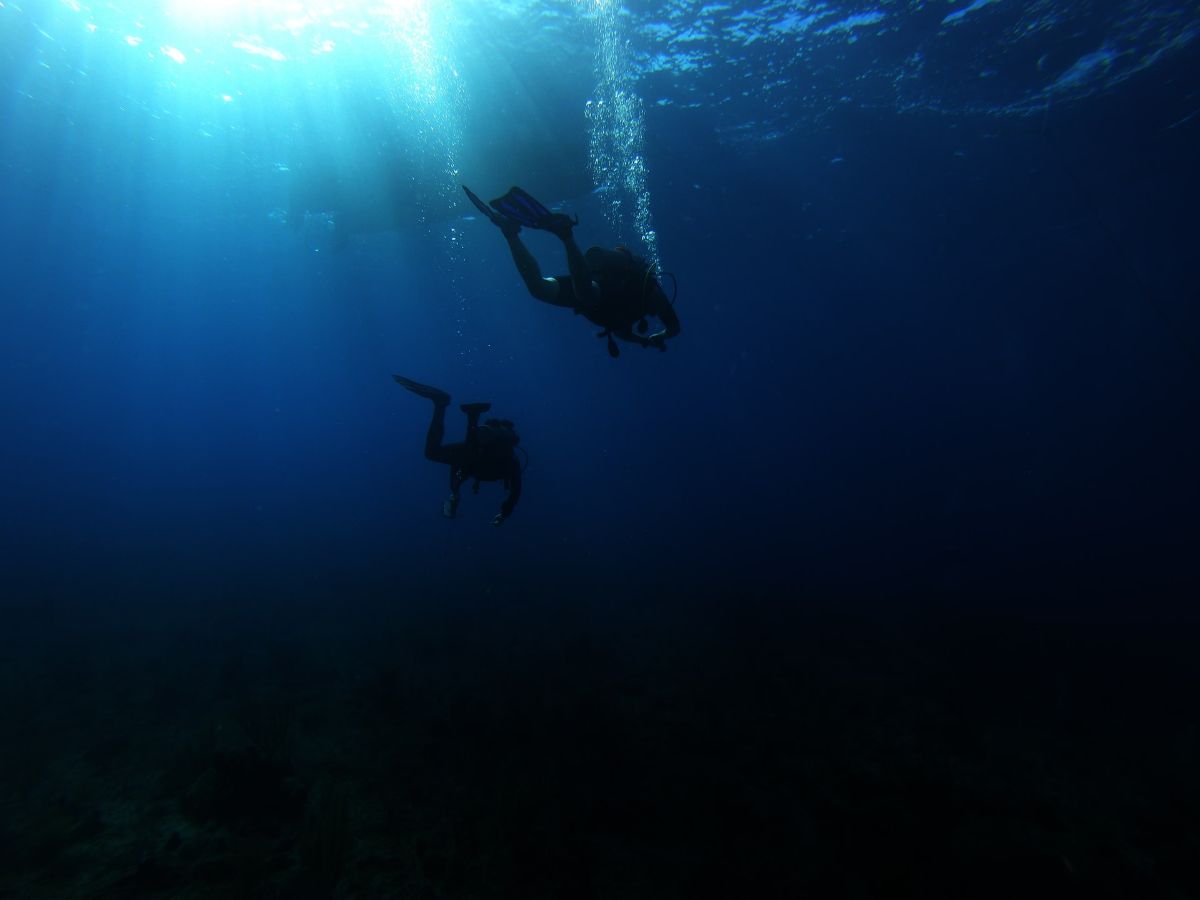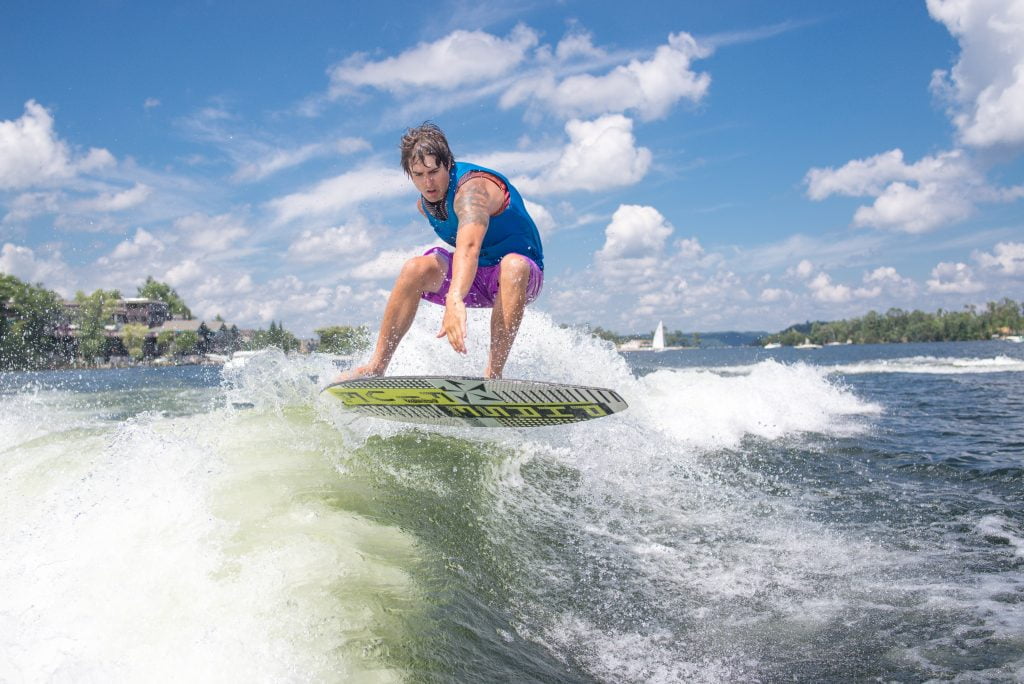As far back as ancient Greek and Roman times, mankind has always been fascinated with diving deep below the ocean’s surface.
Whether it be searching for food, treasures, or simply driven by curiosity, the challenge of diving down deeper has been an ever-constant battle against the mighty force of water pressure.
In order to answer the question “how deep can you scuba dive?” you first need to look at the type of diving an individual is doing.
The three most common types of diving are general deep diving, recreational diving, and technical diving. Each of these dives has its own maximum diving limits that divers must stick to.
But why are certain dives limited to certain depths? And how deep can an individual scuba dive? Today, we’ll be answering these very questions.
Tip: If you plan on scuba diving in the near future, check out our list of the best affordable diving watches on the market.
Quick Jump
How Deep Do Scuba Divers Go? Three Dive Types

As mentioned above, there are three common types of dives that scuba divers perform, each of which has its own maximum depth. In order to get a better understanding of how deep divers venture below the surface of the ocean, let’s look at the different types of dives.
Deep Diving
Deep diving might sound like quite a daunting task, but it’s actually one of the most common types of scuba diving. Essentially, a deep dive is any dive that goes below a maximum depth of 60 feet.
Recreational Diving
Recreational diving is one level up from deep diving. The maximum recreational diving limit is set at a depth of between 100 and 130 feet, depending on your skill level and training.
Any dive deeper than 130 feet starts to present issues that only well-trained divers are equipped to handle. This includes things like oxygen toxicity and nitrogen narcosis.
Technical Diving
As the name suggests, technical diving is an advanced form of scuba diving that only trained professionals are allowed to perform. Technical dives have a limit of between 170 and 350 feet, and sometimes even deeper than that.
Technical divers usually spend their time going places that regular divers can’t reach. This includes reefs and shipwrecks at depths well below the 130-foot recreational limit.
How Far Can You Dive With Scuba Gear? Air Consumption

The depth at which you’re able to scuba dive depends largely on how many oxygen tanks you’re using, along with your rate of air consumption. During a dive, the deeper you descend the more you breathe, meaning you’ll use a lot more oxygen.
As you descend even deeper, the density and pressure increase in the air you breathe and in your lungs. As a result, each breath you take underwater will contain more air particles than if you were to breathe on the surface, which means you end up consuming more oxygen from your tanks.
With proper training and experience, a diver can train their bodies to use less oxygen while diving. Being in good physical health also helps to decrease air consumption while diving, thus increasing their max scuba depth.
The Dangers of Scuba Diving: Decompression Sickness

One of the biggest dangers of scuba diving is decompression sickness. When an individual dives below the surface of the water, they breathe in a combination of oxygen, nitrogen and other gases. As the diver descends, their body uses oxygen while the nitrogen is slowly released from the body.
The danger of decompression sickness occurs when the surrounding pressure suddenly drops, like during a rapid ascent. As the nitrogen gas in your body tries to escape it expands into little bubbles, which are then trapped inside your body. These bubbles usually get trapped in your joints and blood vessels.
When this happens, a diver goes through decompression sickness, or ‘the bends’ as it’s more commonly known. Not only do the bends cause severe pain, but it can actually lead to a stroke or heart attack, and eventually death.
Decompression sickness becomes a serious risk once a diver descends to a depth of around 100 feet. And the deeper you go, the higher the risk of getting the bends becomes.
The symptoms of decompression set in quite quickly after the dive. Most divers usually start to feel signs of the bends within an hour of surfacing from the dive.
Common symptoms of decompression include:
- pain in muscles and joints
- stomach pain
- lightheadedness or dizziness
- vision problems, such as double vision
- vertigo
Thankfully, there are ways to avoid getting the bends.
How to Avoid Getting Decompression Sickness
The most common method to avoid getting decompression sickness is to take ‘safety stops’ as you ascend to the surface of the water. Most divers will make safety stops at a depth of around 15 feet and will stop there for 10 to 15 minutes.
If you’re performing a very deep dive, it would be best to make more than one safety stop as you ascend. Another way to prevent the delayed onset of decompression sickness is to avoid flying or travelling to high elevations after your dive. This is done as a way to give your body time to adjust to the change in altitude.
How to Treat Decompression Sickness
If you do start to feel symptoms of the bends after your dive, this is regarded as a medical emergency, and you should seek medical attention right away. In some mild cases, your decompression sickness can be treated by breathing in 100 percent oxygen from a mask.
If, however, your decompression sickness is severe, you’ll need to go through something called recompression therapy to get all of the trapped nitrogen out of your body.
When you’re sent for recompression therapy, you are put into a specially designed chamber that has an air pressure three times higher than normal. As you wait inside the chamber, the concentration of oxygen in your body increases while the concentration of nitrogen bubbles slowly decreases.
Recompression therapy can last from as little as 3 minutes all the way to 3 hours, depending on the severity of your decompression sickness.
The Deepest Dive in History

Now that we know about the different kinds of dives along with their maximum depths, let’s take a look at the deepest dive ever performed by a human.
The max scuba depth anyone has ever dived to is an astonishing 1,090 feet and 4.5 inches and was performed by 41-year-old Egyptian diver, Ahmed Gabr. It took Ahmed just 12 minutes to reach this record-setting depth.
Resurfacing, however, was a much longer ordeal. To prevent decompression sickness from setting in after such a deep dive, Ahmed took 15 hours to ascend to the surface of the water, making a number of safety stops along the way.
Final Thoughts: How Far Down Can You Scuba Dive?

Deep-sea diving has long been a part of what makes us human. Exploring the depths of the ocean has been coded into our DNA since humans first stepped foot into the ocean. This has helped us as a species to not only answer the question ”how deep can a human scuba dive?”but it has also given us the motivation to push that limit.
If you’re looking to enjoy a far more relaxed water-based activity on your next holiday, check out our guide on how to paddle a kayak.


